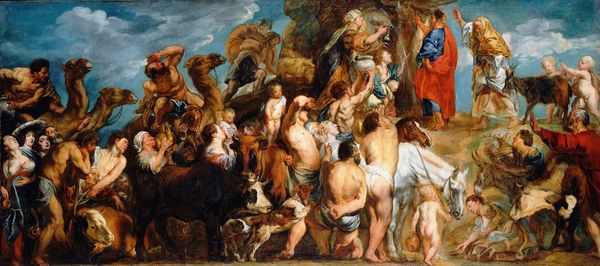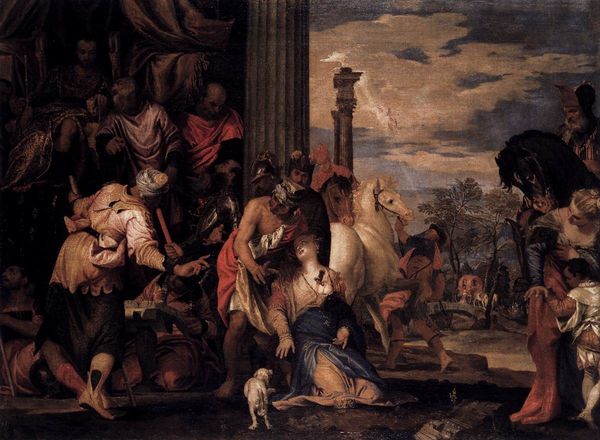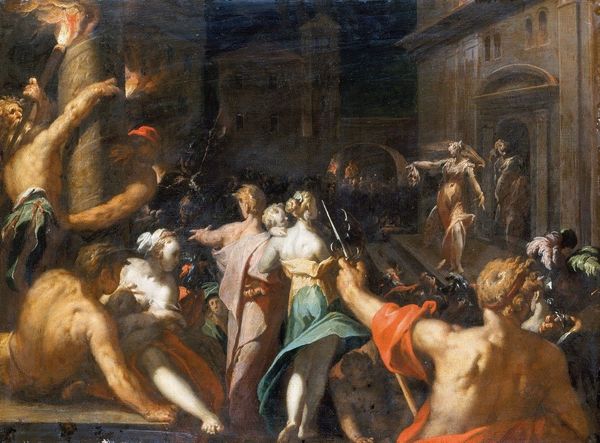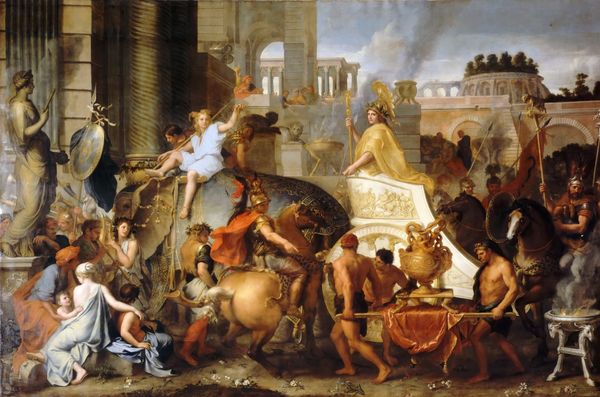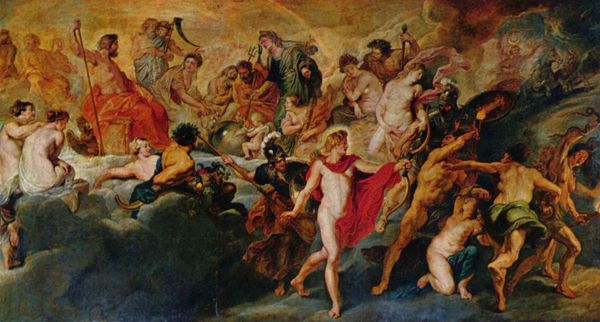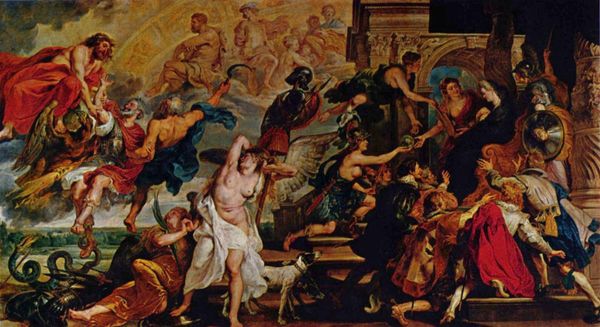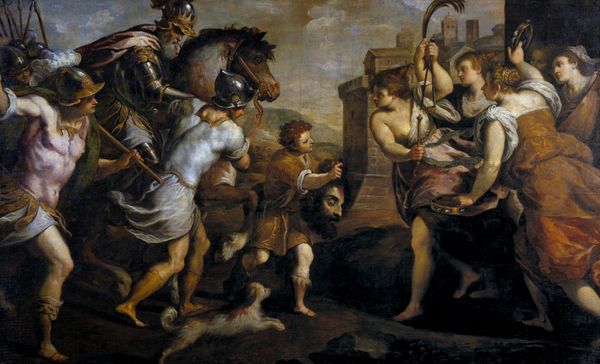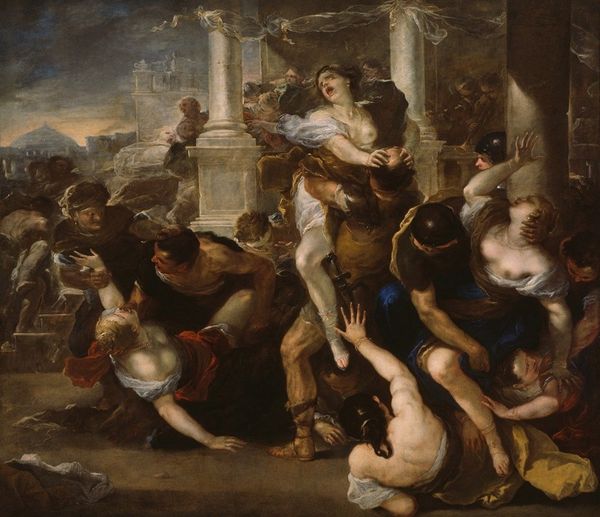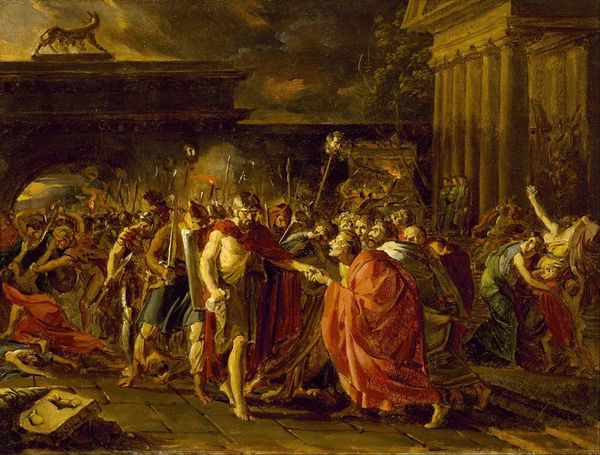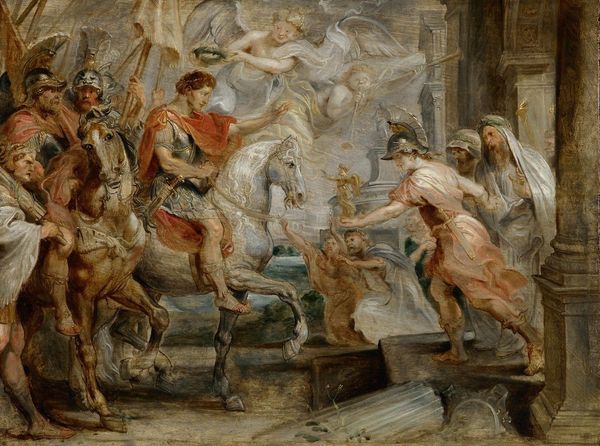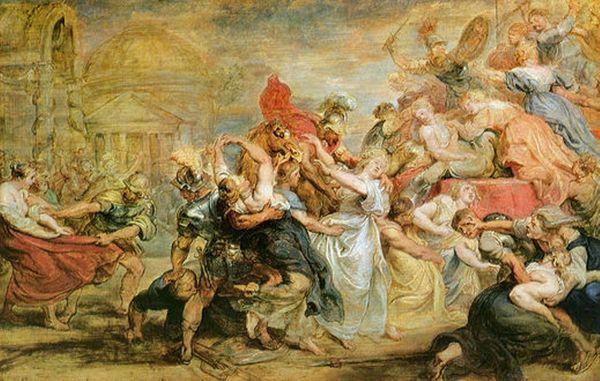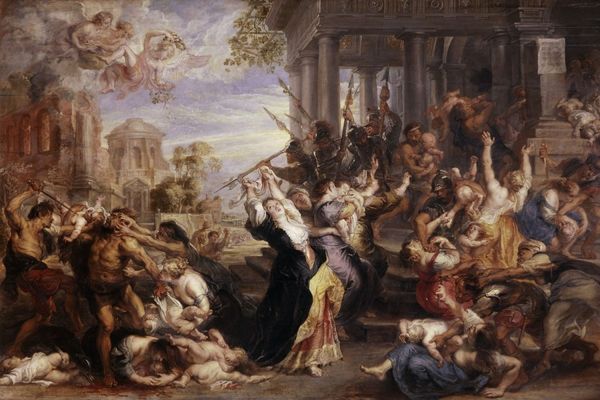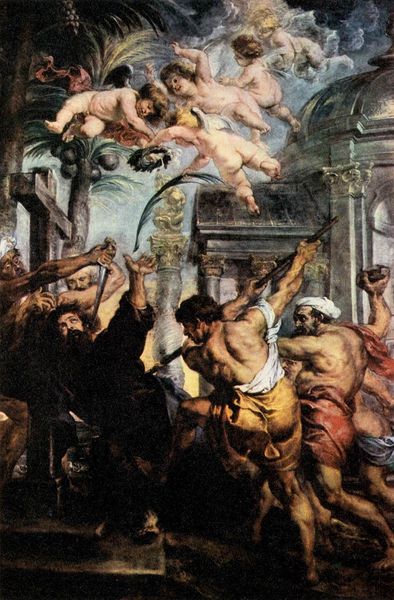
painting, oil-paint
#
narrative-art
#
baroque
#
painting
#
oil-paint
#
painted
#
figuration
#
underpainting
#
flemish
#
painting painterly
#
history-painting
Dimensions: 170 x 236 cm
Copyright: Public domain
Curator: Chaos! The initial impact of this canvas is utter chaos. Editor: It is indeed. What we're seeing is Peter Paul Rubens' "The Abduction of the Sabines," created in 1637. The dramatic oil painting captures a pivotal moment from Roman history. It is now held at the National Gallery in London. Curator: The architecture feels flimsy compared to the mass of struggling bodies. Is that intended? I mean, shouldn't something meant to suggest the seat of empire feel… more substantial? Editor: Rubens, remember, had his studio and assistants. Consider the materiality: Oil paint layered to create this seething energy. We have underpainting shaping form, with looser, freer brushwork that intensifies the overall drama. Labor went into every stage here. Curator: Look at how the artist presents this tale: Rome needed wives, so Romulus orchestrated a festival and… then his men seized the Sabine women. It is a foundation myth rooted in violence. What are the implications of this act when visualizing state-building? Editor: The act becomes justified in service to the narrative. Think about the market this was made for. What kinds of political agendas was it employed for then, or is being employed for now? The materiality also served power and influence, since having such huge artwork required great capital investment. Curator: Do you feel any pity for the Sabines as represented here, though? Despite being the center of the painting, it is as if their experience is simply the trigger that sets off other stories. Editor: That could be a misinterpretation on my part, but even the faces appear more generic. They symbolize broader themes related to power, nation, and war instead of representing lived emotional realities of being abducted and violently integrated into society. I see the emphasis to be not with the figures, but rather on Rubens' ability to tell the tale and impress his public with a highly valuable artifact. Curator: It makes you wonder what values endure, doesn't it? Or at least, which values our culture is willing to examine most honestly, and which it obscures with heroic, aggrandizing myths. Editor: Right. The creation of artwork becomes a form of mythology in and of itself. And how it is appreciated becomes a process of negotiation over those mythologies across history.
Comments
No comments
Be the first to comment and join the conversation on the ultimate creative platform.
